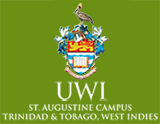ESST 2006 Pollution Biology
Course Description
Healthy ecosystems rely on interactions between the living portions of the environment and its non-living components. However, human activities can cause significant disturbance as a result of the accidental or deliberate introduction of pollutants into the environment. These disturbances can cause significant alterations in the interactions between the various components that make up the ecosystem. The main focus would be on the effects of these pollutants and how they can be assessed using physicochemical and biological endpoints. Particular attention would be placed on describing (1) what pollution is and how/why it is harmful at multiple levels of biological organization, (2) what the root sources and causes of pollution are, (3) what happens to pollutants (chemical, biological and physical) when they enter the environment, and (4) how each pollutant class affects individual and community health over acute to chronic exposure periods. The course will focus on a variety of anthropogenic stressors in outdoor and indoor environments such as (1) chemical agents including ozone, asbestos, radon, smoke, nanoparticles, heavy metals, chlorination by-products, pesticides, petroleum hydrocarbons and endocrine active chemicals; (2) physical stressors including radiation, heat and noise; and (3) food/water-borne stressors such as bacteria, viruses, algae/biotoxins and parasites. The delivery of course materials would involve a combination of lectures, practicals, tutorials, and web based materials. Assessments are designed to encourage students to work continuously with the course materials.
Assessment






